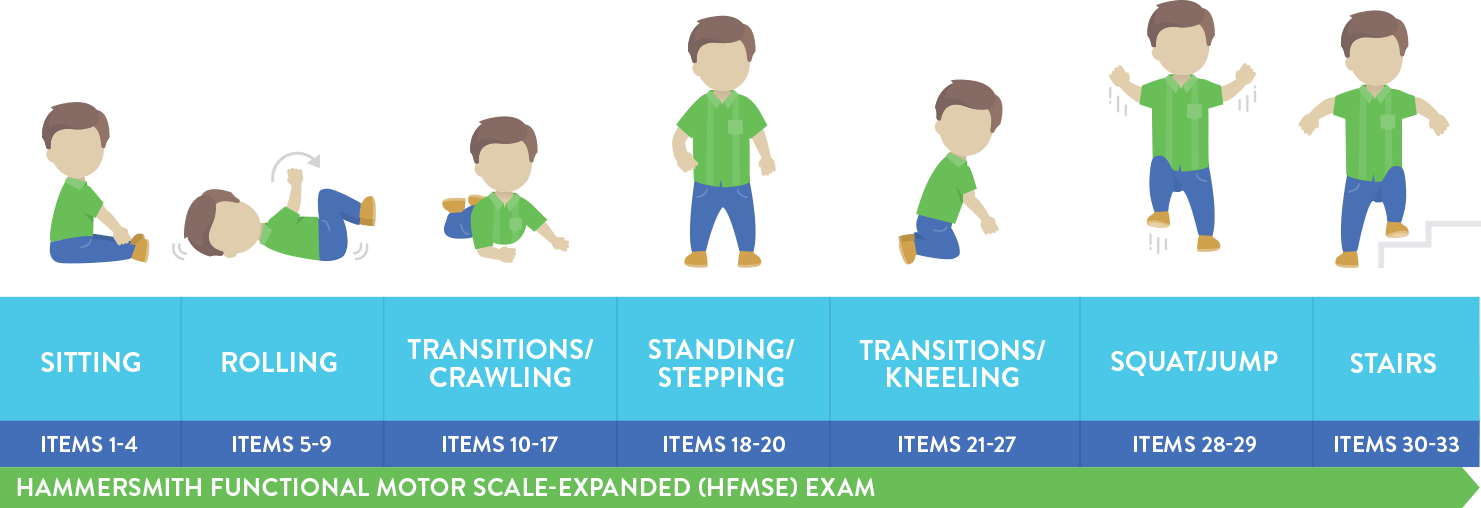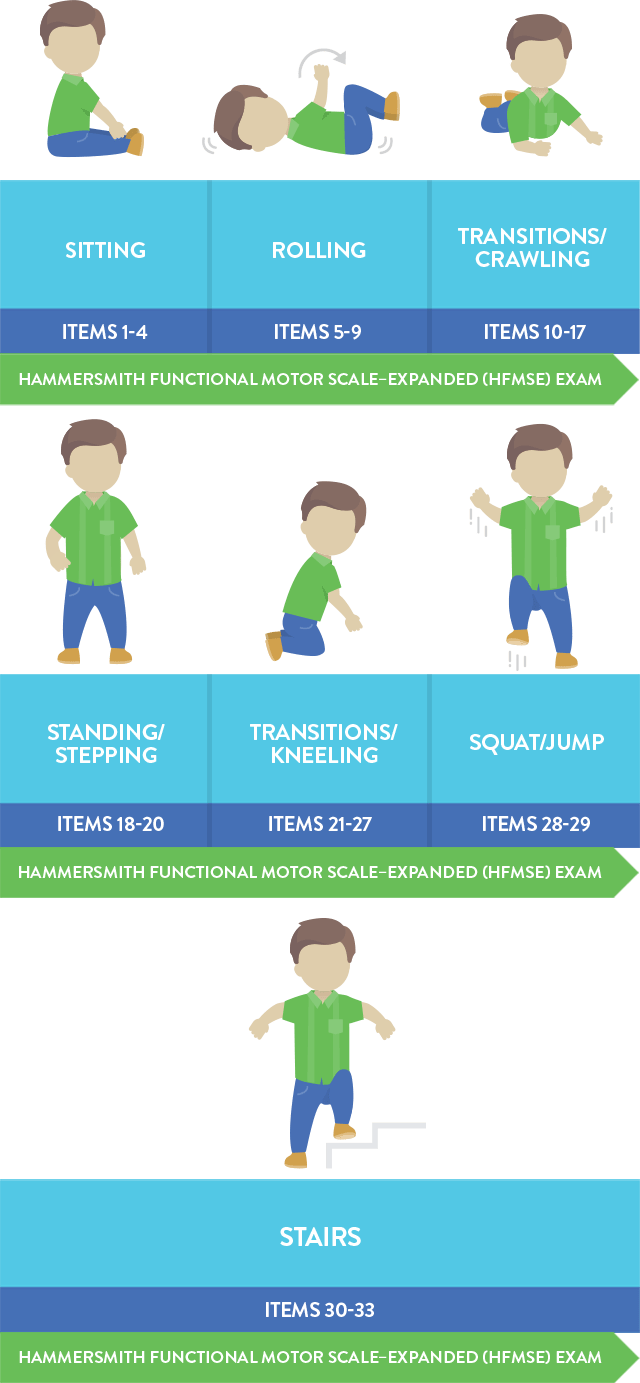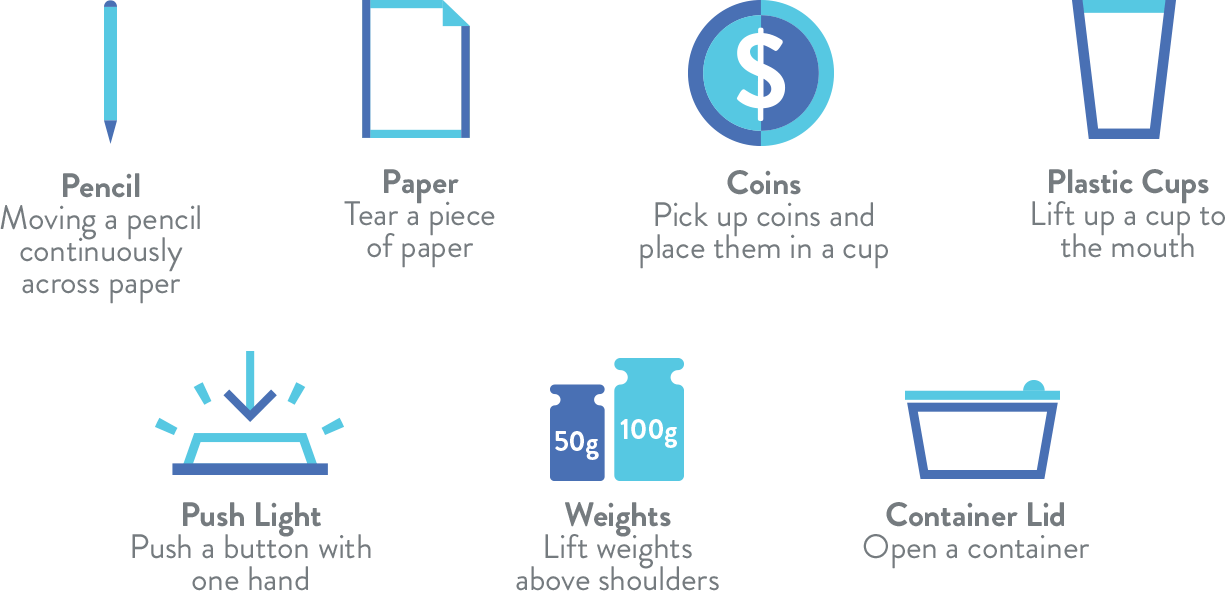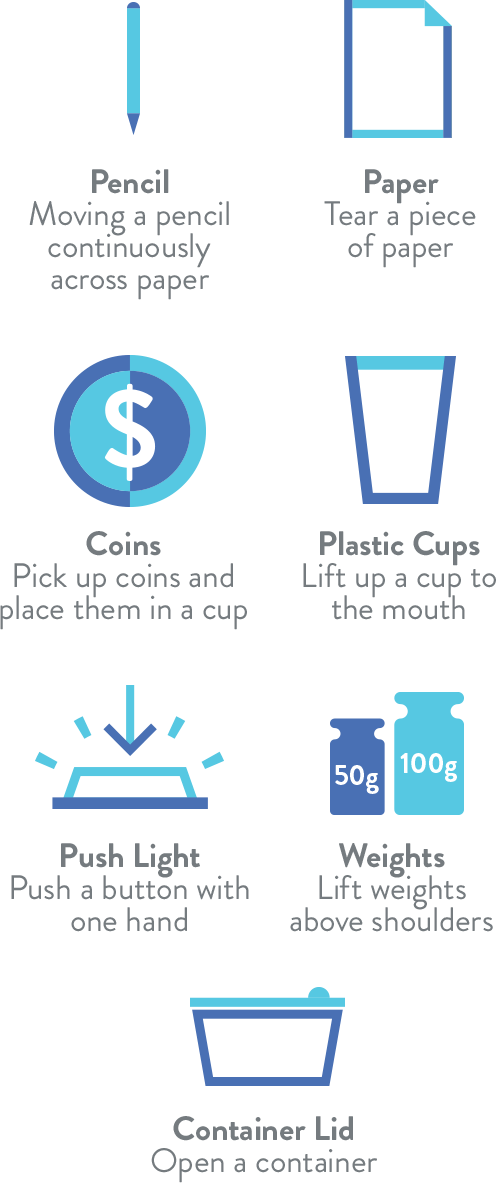


-
Argentina (Español)

-
Australia (English)

-
Austria (Deutsch)

-
België (nederlands)

-
Belgique (français)

-
Brazil (Portugues)

-
Canada (English)

-
Canada (Français)

-
Chile (Español)

-
Denmark (Danish)

-
Deutschland (Deutsch)

-
Europe (English)

-
France (Français)

-
Italia (Italiano)

-
日本(日本語)

-
대한민국 (한국어)

-
Polska (Polskie)

-
Portugal (Portuguese)

-
Russia (Russian)

-
Spain (Español)

-
Suomi (Suomi)

-
Sverige (Svenska)

-
Schweiz (Deutsch)

-
Türkiye (Türkçe)

-
台灣 (中文)

-
United States (English)

-
UAE (العربية)

Physical assessments for individuals with
spinal muscular atrophy (SMA)
Various scales are used to evaluate changes in motor function and physical ability.
These assessments should only be performed by a trained
healthcare provider (HCP)
A healthcare provider (HCP) will determine an appropriate assessment based on age and physical ability (ambulatory vs nonambulatory).
Select from the options below to learn more about some of these assessments.
Physical assessments for infantile-onset SMA
The Hammersmith Infant Neurological Examination (HINE) Section 2
The HINE Section 2 measures changes in key developmental motor milestones in infants and weaker children with SMA. Results are measured on a point system used to score improvement or worsening in motor milestone achievement.
8 motor milestones scored: |
|


|
Assessment criteria



The Children’s Hospital of Philadelphia Infant Test of Neurological Disorders (CHOP INTEND)
The CHOP INTEND measures incremental motor function changes such as increased movement, flexibility and strength.
16 motor functions scored within 4 categories: |
|


|
Assessment criteria



Physical assessments for children and adults with SMA
The Hammersmith Functional Motor Scale – Expanded (HFMSE)
The HFMSE measures motor function changes in a broad range of ambulatory and nonambulatory individuals. An increase of ≥2 points is typically considered a clinically meaningful improvement.
This assessment should be performed by a physical therapist or trained HCP.
33 functions scored using 7 categories: |
|


|
Assessment criteria



The 6-Minute Walk Test (6MWT)
The 6MWT is a dynamic exercise assessment that measures fatigue-related changes in walking ability. Participants are instructed to walk as fast as possible along a 25-meter course, turn around, and return in the opposite direction. The course is repeated as often as possible for 6 minutes. Running or jogging is not permitted.
The walking course: |
|


|
Assessment criteria



The Revised Upper Limb Module (RULM)
The RULM is an updated version of the Upper Limb Module (ULM) assessment. It includes more activities related to daily life such as lifting heavier objects. The RULM measures upper limb strength in most individuals with SMA while the ULM is typically for weaker, nonambulatory individuals with SMA.
19 activities scored using 7 items: |
|


|
Assessment criteria



Attend a Together in SMA Education Event
